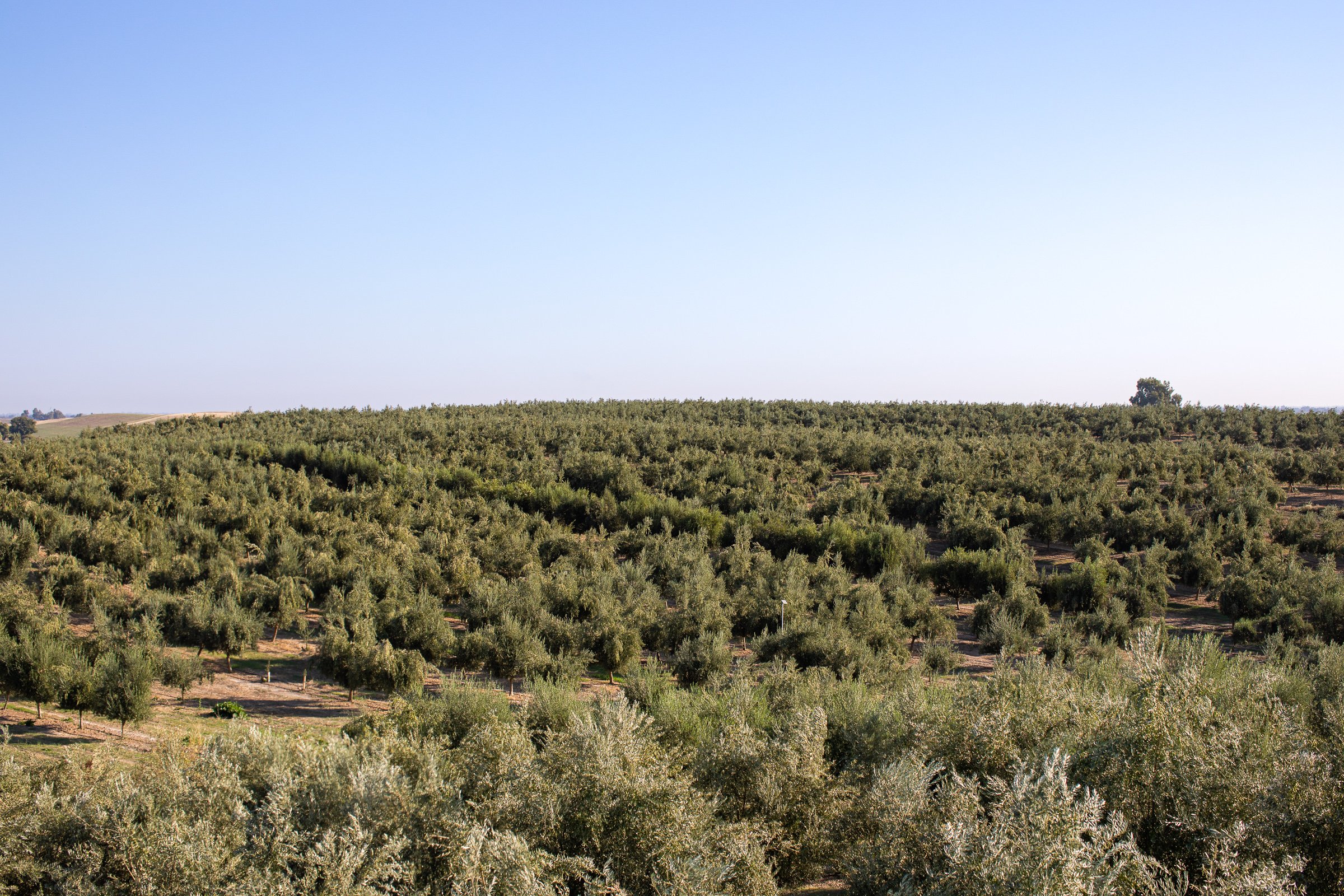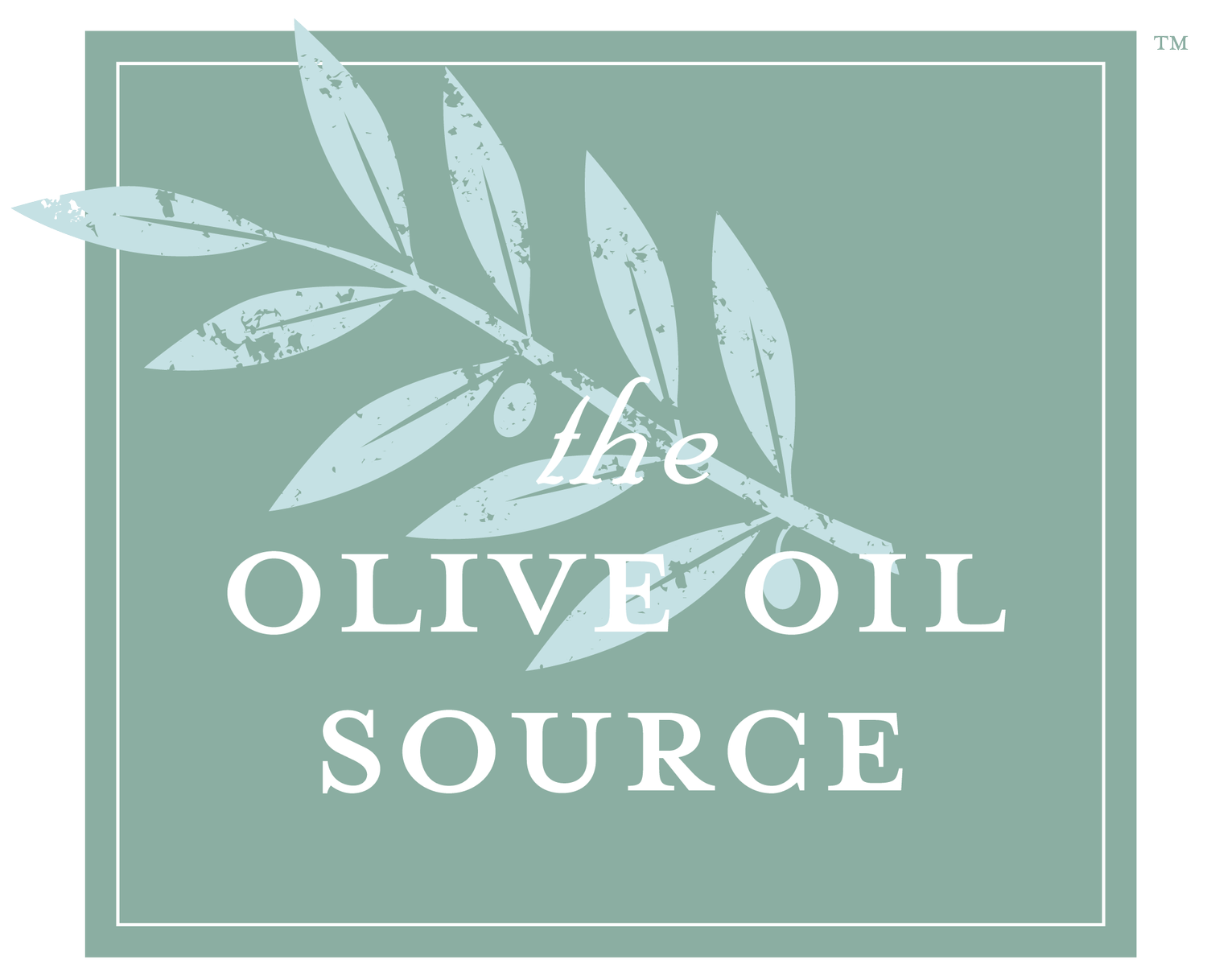
Super High Density Olive Orchards
We asked Alan Greene, one of the pioneers and leading experts in Super High Density (SHD) orchards’ development to describe some of the differences between SHD and traditional olive orchards. SHD olive orchards are distinctive in both the way the trees are planted on a trellis system and the manner in which they are harvested. Properly managed, a SHD orchard should have yields that are more consistent, require fewer inputs, and use less labor than a similar sized traditional orchard. Keep in mind, however, that SHD olive orchards are still relatively new, and that many questions about potential long-term issues have yet to be answered.
SITE SELECTION
Minimum Size
From a strict capitalization and return on investment point of view, it is unlikely that an orchard less than 100 acres will work with reasonable risk factors. The primary driver is the cost of equipment or of the rental of equipment. There needs to be a minimum number of acres to spread the equipment cost and operator hours over. There may be special circumstances, of course. If someone has 200 acres of grapes and already owns a harvester and spray equipment that can be adapted to SHD then smaller acreage may work.
Other Factors
In addition to being suitable for olives, the soil needs to be able to support heavy harvesters during the month of harvest. If your region experiences heavy rain in the fall, the soil must have enough drainage to support the weight of the harvesters. Today, most SHD orchards are planted in rows running north to south to maximize canopy exposure. The site’s north to south shape and slope of the property should allow for rows of significant length so the harvester does not spend most of its time turning around. There will also need to be enough room at the end of each row to allow for efficient harvester turn-around. When mapping out tree rows, make sure both vertical and side slopes do not exceed available harvester technology to keep from tipping over.
VARIETALS
The three most common varieties are Arbequina, Arbosana, and Koroneiki. In addition, three new varieties, Favolosa, Don Carlo and Allegra are showing promising results. Due to growth vigor, Arbequina and Koroneiki are best planted at 6 feet (1.8m) or more on center on all but the worst soil conditions. Because Arbosana grows with lower vigor, it may be planted on center as close as 4.5 feet (1.4m) apart on poor soils. Distance between rows is a function of how tall the trees will be allowed to grow. The decision on tree height is a combination of personal preference, available harvester capacity, and terrain.
TRELLIS STRUCTURE
A trellis is required in SHD orchards to: a) support the tree’s straight upright development, and b) ensure tree rows are perfectly straight for harvesters to operate with minimal damage to the trees. Most plantings today are two wire systems with the top wire set at 5.5 feet (1.7m) or 6 feet (1.8m). The second wire is often set 2 feet (0.6m) lower unless it is used to suspend the drip irrigation hose, in which case it is generally set at 18 to 20 inches (about 0.5m) above the ground. Care needs to be taken locating the suspended hose to ensure the wire and hose are out of the cutting area of the mechanical skirter, if used.
DEVELOPMENTAL PRACTICES
What drives the effectiveness of the SHD system is having a uniform tree structure throughout the orchard so the harvesters can operate quickly and effectively. The primary objective is to get the 18 to 24 inch (0.5 to 0.6m) seedling to the top of the stake (about 6 feet (1.8m)) as quickly as possible. During the primary growth period, the trees can grow 12 inches (0.3m) in as little as 7 days. It is critical to keep the primary leader moving straight up the bamboo stake, requiring frequent passes of a tying crew. Weeds must be kept out of competition with the young trees. Experience supports the use of protective sleeves on newly planted trees to protect them both from low temperatures and from herbicidal spray applications. Drip emitters must be placed directly on the tree for the first 6 to 8 months to ensure the small root ball is sufficiently moist.
IRRIGATION
Current practices indicate 18 inches (0.5m) of irrigated water is all that is needed on heavier soils with good water holding capabilities. Drip irrigation is strongly recommended. After the tree has developed out beyond the initial planting root ball, a ½ gallon (1.9L) emitter placed 18 inches (0.5m) on either side of the tree is appropriate for most orchard conditions.
TOPPING
Typically, trees are mechanically topped every 12 to 24 months. Arbequina and Koroneiki on good soils will require topping every year. Arbosana may go as long as 3 years on the same soil before topping is required.
HARVESTING
A number of new harvesters are being introduced each year. Most are based on over-the-row harvesters used for harvesting grapes. Different models will accommodate tree heights from 6 feet to 10 feet (1.8 to 3.0m). Current orchards are yielding 5 tons of fruit per hour using mechanical harvesters. To achieve this speed each harvester will need to be supported by 1 to 2 gondolas pulled by tractors.
Most plantings will have 1 ½ to 2 + tons of fruit per acre in the fall after the second full summer. Experience indicates long-term tree development is improved if the first harvest is delayed until after the third full summer. Two-year-old trees often experience more damage from the harvester than the payoff in oil yield. Three-year-old trees generally are strong enough to withstand harvester shaker bars.
SOURCES
Alan Greene, A Greene Idea
